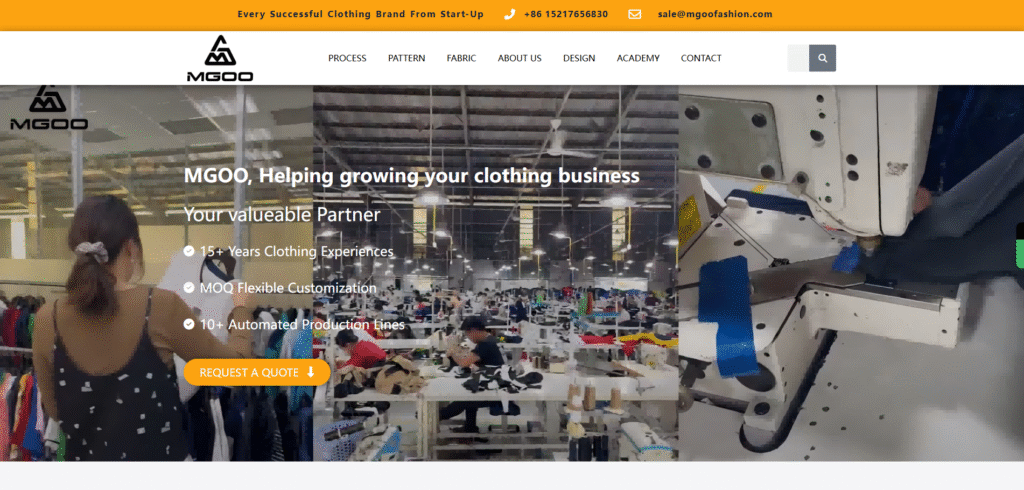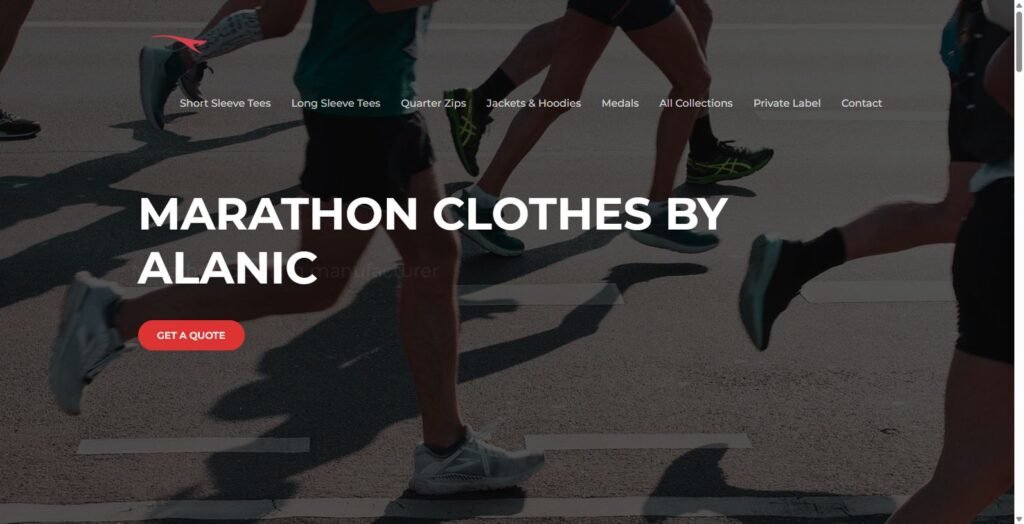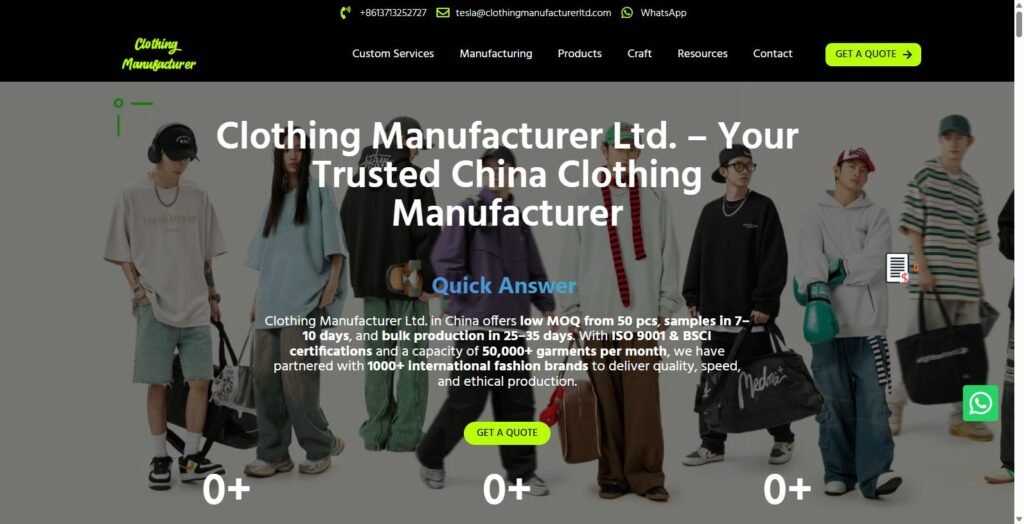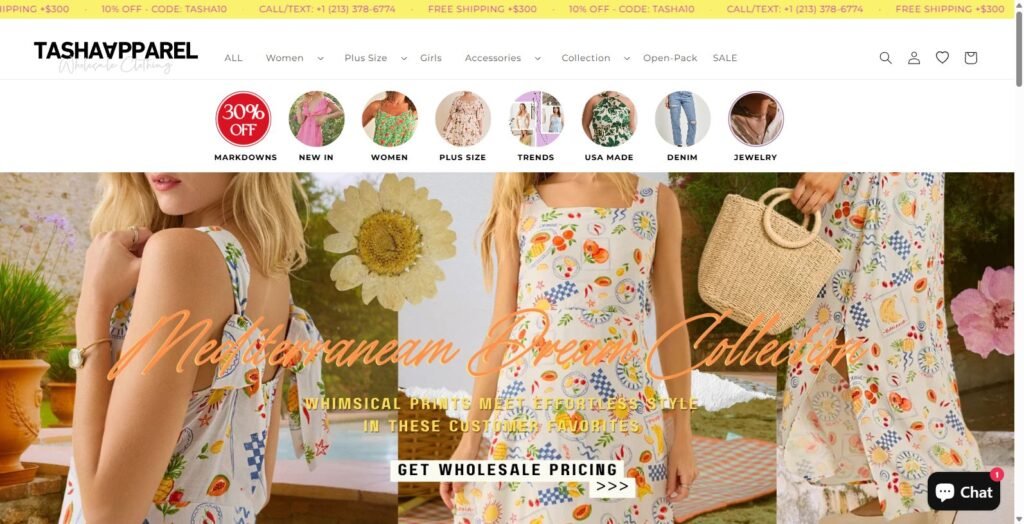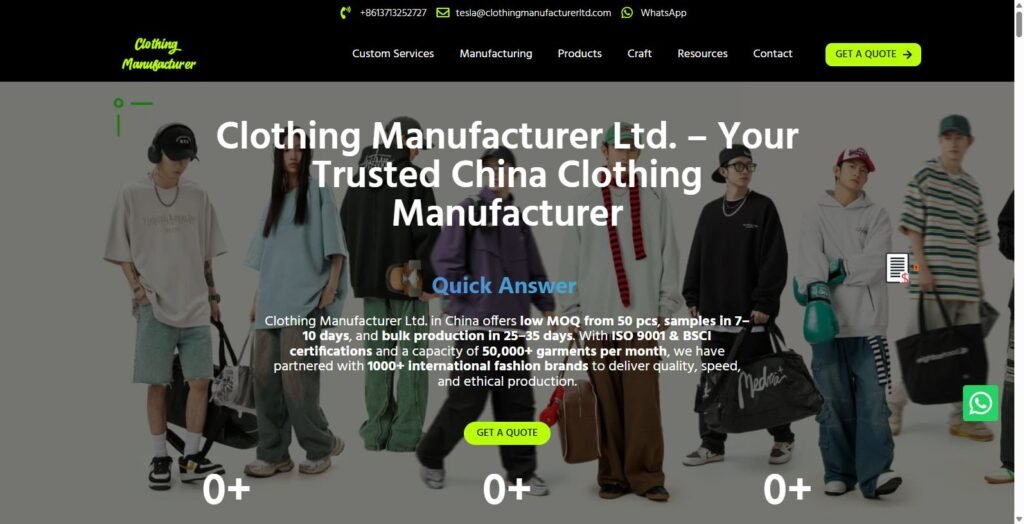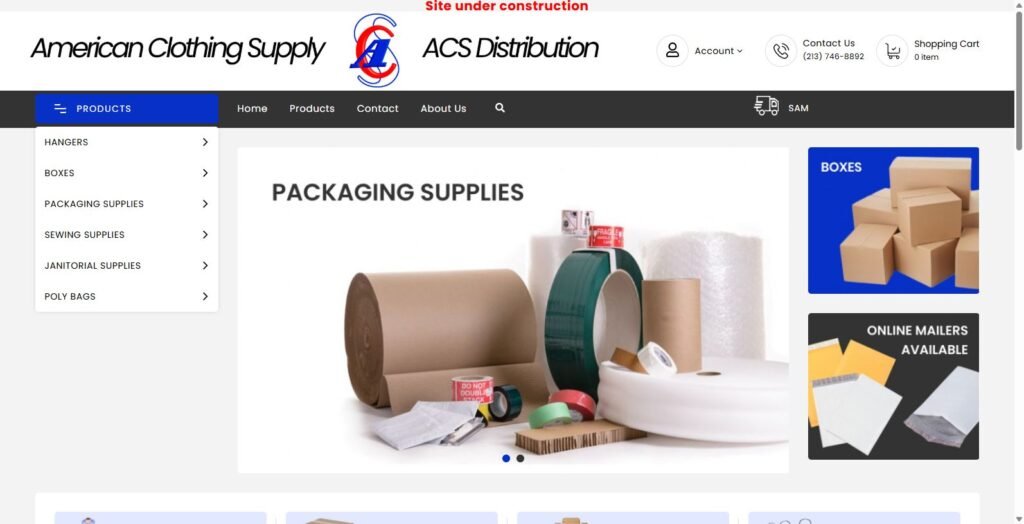Many clothing companies imagine bringing their ideas to life to make real, wearable masterpieces. The journey from idea to finished product hinges on a single crucial decision: the technology you choose. Finding the right clothing printing machine is the first step towards the production capacity, quality of the product, and business model you are going to have.
 This guide takes you through the selection process easily. We’ll cut through the confusion with a clear, expert roadmap. You’ll discover the pivotal types of clothing printing machines, compare them by your budget and volume needs, and learn what specific equipment you require for a complete setup. The smart pick will save you from making costly mistakes at the start.
This guide takes you through the selection process easily. We’ll cut through the confusion with a clear, expert roadmap. You’ll discover the pivotal types of clothing printing machines, compare them by your budget and volume needs, and learn what specific equipment you require for a complete setup. The smart pick will save you from making costly mistakes at the start.
First, What Are the Main Types of Clothing Printing Machines?
Before talking about specifics, you must know the foundational technologies. Each printing machine for clothing works differently and has its own advantages. This knowledge should serve as your introduction to the process of locating the perfect model for your company.
Industry experts identify the most common t-shirt printing methods as:
- Direct-to-Garment (DTG) Printers: This type of device is like a special inkjet printer that directly prints on the fabric. They are the best to use to print intricate, full-color designs.
- Direct-to-Film (DTF) Printers: With this method, you first print your design onto a special transfer film, and then the film is heat-pressed onto the surface of the clothing for a final product with vibrant, versatile colors.
- Screen Printing Presses: The original, tried-and-true method. It involves using a stencil (screen) to regulate the flow of ink onto the fabric, with one color added at a time.
- Heat Press Machines (for Vinyl & Transfers): This is a very easy method to start with. Heat presses use organized heat and pressure to apply designs from heat transfer vinyl (HTV) or from pre-printed transfers.
【Unique Value Point】 Head-to-Head Comparison: Which Printing Machine is Right for You?
The “best” clothing printing machine isn’t universal. A printing machine that is right for you solely depends on your objectives. The equipment you can operate best with is the one that corresponds to your business plan, design complexity, production volume, and starting budget.
To help you with your decision, we have put together a comparison chart. Check the chart, and you may find the exact technology that aligns with your vision for your clothing line.
| Machine Type | Best For… | Initial Cost | Print Quality & Feel | Durability | Fabric Compatibility | Speed / Volume |
|---|---|---|---|---|---|---|
| DTG Printer | Complex, multi-color designs on demand | $$$$ | Soft, breathable feel; ink is in the fabric | Very Good | Best on 100% cotton; good on high-cotton blends | Slow per piece, best for one-offs & small runs |
| DTF Printer | Versatile prints on any fabric, including polyester & darks | $$$ | Slightly plastic feel, very vibrant | Excellent | Works on almost anything (cotton, poly, blends, leather) | Moderate per piece, scalable for medium runs |
| Screen Printing | Large batches of simple, 1-4 color designs | $$ | Thicker ink layer, very durable feel | Excellent | Very versatile, inks for specific fabrics available | Very slow setup, but extremely fast for bulk orders |
| Heat Press | Low-cost startup, hobbyists, personalization | $ | Varies by transfer type (vinyl feels like a layer) | Good | Works on most fabrics, depends on transfer type | Slow per piece, not ideal for high volume |
A Deeper Dive into Each Clothing Printing Technology
Once the comparison table narrows your selection, dig into the specifics. Learning about the functions of each apparel printing machine, as well as their respective benefits and disadvantages, will help confirm your decision.
Direct-to-Garment (DTG) Printers: For Photorealistic Detail
The DTG printing process involves putting the garment onto a flatbed and then printing the image directly onto the machine, much like a paper printer. Dark clothes are first given a white base layer to help the colors show better.
- Pros: You can use any color you want, even with gradients, and this technique is perfect for photos and intricate designs. The final print feels soft as the ink has been absorbed into the fabric.
- Cons: The high starting cost is an issue. Some garments, especially dark ones, require pre-treatment liquid before printing, which adds steps to the workflow. They work best on 100% cotton, and production is slower for bulk orders compared with screen printing. Modern digital textile printers are built for this level of detail.
Direct-to-Film (DTF) Printers: The All-Rounder

DTF is a multi-step process that has gained popularity for its flexibility. You print your design onto a PET film, apply powdered adhesive to the wet ink on the back, cure the film in an oven, and finally, apply the finished transfer to the piece of clothing with a heat press.
- Pros: The best feature is the variety of fabrics it works on, such as cotton, polyester, leather, and many more. Colors are incredibly vibrant on both light and dark fabric, and the print is very durable.
- Cons: The final print sits on top of the fabric and can feel slightly plastic or vinyl-like compared to DTG. The process requires more steps and supplies (film, powder) than DTG.
Screen Printing Presses: The Industry Workhorse
This is the traditional method of commercial decoration on clothing. You start by separating the design into different colors and making a stencil (screen) for every color. Ink is pushed through the mesh of the screen onto the clothing with a squeegee.
- Pros: It is a very cost-effective method for large production runs. Prints resist wear and tear very well. You can even use specialty inks such as metallic, glitter, and puff prints with this method.
- Cons: Setup is labor-intensive and not practical for one-off prints or small batches. Each color needs a separate screen, which makes complex, multi-color designs difficult and expensive.
For brands that are centered on classic, durable prints, mastering screen printing is a plus. Additionally, it helps to achieve unique textures, which you can explore in our ultimate guide to puff screen printing.
Heat Press Machines: The Perfect Entry Point
A heat press is the heart of several popular methods, most commonly Heat Transfer Vinyl (HTV) and pre-made transfers (like DTF or screen printed transfers). For HTV, you cut a design from a vinyl sheet, “weed” (remove excess vinyl), then apply it to the shirt with the heat press.
- Pros: This method has the lowest cost of entry. The process is simple to learn, and the equipment has a very small footprint, making it a good fit for home-based businesses.
- Cons: The process is labor-intensive per piece and doesn’t scale well for high-volume orders. The final durability and feel of the garment depend entirely on the quality of the vinyl or transfer being used.
【Unique Value Point】 Beyond the Machine: Your Complete Starter Kit Checklist
From our knowledge, we know that your clothing printing machine is only part of the story. Startups frequently overlook the other accessories needed to make professional products. The following is a practical checklist to make sure you have all the essentials.
The Essentials for ANY Setup:
- A reliable computer with professional design software (e.g., Adobe Illustrator, CorelDRAW) or capable free alternatives (GIMP, Inkscape).
- A dedicated, well-ventilated workspace. Good air, light, and power are critical.
- A stock of good quality blank apparel for testing, practice, and the first production runs.
For DTG/DTF Setups:
- Specific inks formulated for your printer model.
- DTF: High-quality transfer films and adhesive powder.
- DTG: Pre-treatment solution and application system (simple spray bottle or automated pre-treat machine).
- A curing device: A high-quality heat press is essential, but a conveyor dryer is needed for higher volume.
For Screen Printing Setups:
- Screens with various mesh counts for different ink types and design details.
- A set of quality squeegees.
- Photopolymer emulsion and a scoop coater for applying it to screens.
- An exposure unit to “burn” your design onto the emulsified screen.
- Inks (Plastisol is standard; water-based is softer and eco-friendlier).
- A washout booth for cleaning screens and reclaiming them for reuse.
- A flash cure unit (for multi-color jobs) and a conveyor dryer for final curing.
The Right Investment: Typical Costs & ROI
Understanding the financial commitment is vital. Your budget may limit the kinds of printing machines available for purchase. Below is a tier system of what an investment would look like.
The Hobbyist / Side Hustle (Under $1,000)
This price range is suitable for testing the waters. The main focus here is on a high-quality heat press and vinyl cutter. With this setup, you can make simple text-based or single-color graphic designs for platforms like Etsy or for local clients.

The Small Business Startup (2,000−15,000)
This range creates a truly professional setup. Options include a high-end heat press for outsourced DTF transfers, an entry-level desktop DTF printer system, or a complete manual screen printing package. With this investment, you can handle small-to-medium batch orders with professional quality.
Scaling for Growth ($15,000+)
This level of investment will suit businesses that want to focus on large-scale production. Consider high-end DTG printers, fully automated DTF printer/shaker/dryer systems, or automatic screen printing presses. For this level, you may also want to check out professional-grade equipment from manufacturers like M&R.
Your Next Step: From Machine to Masterpiece
 The selection of the best printing machine for clothing is clearly determined by your goals. There is no single “best” product, only what is best for you. Your perfect choice sits at the intersection of your design style, intended production volume, fabric preference, and budget.
The selection of the best printing machine for clothing is clearly determined by your goals. There is no single “best” product, only what is best for you. Your perfect choice sits at the intersection of your design style, intended production volume, fabric preference, and budget.
This guide is your foundation. Go through the comparison table again, review the descriptions of technologies that most interest you, and use our starter kit checklist to create a realistic budget.
Whether your goal is to produce an outstanding puff print hoodie or launch an entire clothing line, the right technology is your foundation. For a partner to work with on large-scale production, check out the services available at Clothing Manufacturer Ltd.
Frequently Asked Questions (FAQ)
What is the easiest clothing printing machine for a beginner?
For the absolute beginner, a heat press combined with a vinyl cutter or pre-made transfers is the easiest and most affordable start. It has the shortest learning curve and initial investment, giving you an opportunity to learn apparel decoration basics before you move on to more complicated machinery.
Can I use a regular home inkjet printer for clothing?
No. Regular home printers use water-soluble dyes not designed to bond with fabric and will wash out almost immediately. You need a dedicated printing machine for clothing, like a DTG printer, or use methods like specially coated heat transfer paper, though these transfers often have low durability.
How much does a good t-shirt printing machine cost?
Costs vary widely based on technology and volume capacity. A startup heat press kit can be found for under 500.Entry−levelDTFormanualscreenprintingsetupstypicallyrangefrom3,000 to 10,000.Professional,high−volumeDTGmachinescaneasilycost15,000 to $20,000 or more.
Which lasts longer: screen printing or DTG?
Traditionally, a properly cured screen print using plastisol ink is the durability benchmark due to the thick ink layers that bond to the fabric. However, modern DTG prints, when pre-treated and cured the right way, are also very durable and often feel softer because the ink soaks into the textile fibers.
Do I need a different machine to print on hoodies versus t-shirts?
Generally, no. Most technologies, including DTG, DTF, and screen printing, can handle both. The deciding factor is not the printing machine for clothing itself, but the accessories. You need the correct size platen or board to securely hold the thicker, bulkier hoodie flat and in place during printing.



